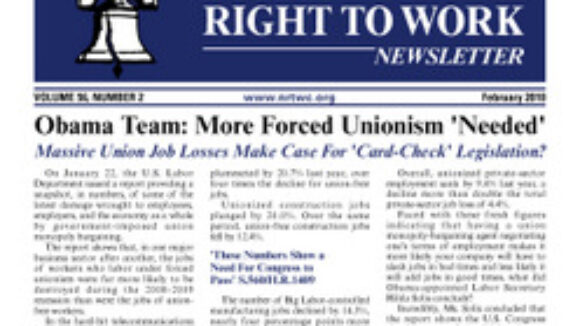Obama Team: More Forced Unionism ‘Needed’
Massive Union Job Losses Make Case For ‘Card-Check’ Legislation?
(Source: February 2010 NRTWC Newsletter)
On January 22, the U.S. Labor Department issued a report providing a snapshot, in numbers, of some of the latest damage wrought to employees, employers, and the economy as a whole by government-imposed union monopoly bargaining.
The report shows that, in one major business sector after another, the jobs of workers who labor under forced unionism were far more likely to be destroyed during the 2008-2009 recession than were the jobs of union-free workers.
In the hard-hit telecommunications sector, for example, the number of jobs subject to union monopoly bargaining plummeted by 20.7% last year, over four times the decline for union-free jobs.
Unionized construction jobs plunged by 20.0%. Over the same period, union-free construction jobs fell by 12.4%.
'These Numbers Show a Need For Congress to Pass’ S.560/H.R.1409
The number of Big Labor-controlled manufacturing jobs declined by 14.3%, nearly four percentage points more than the decline for union-free jobs in manufacturing.
Overall, unionized private-sector employment sank by 9.4% last year, a decline more than double the total private-sector job loss of 4.4%.
